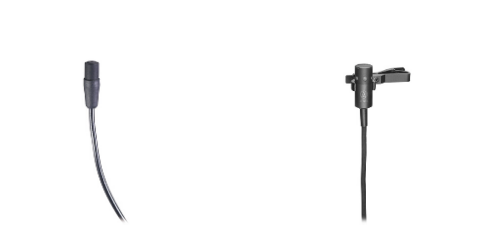
Question: When should I use a lavalier mic for video? When should I use a boom mic?
Answer: As with many things in audio, it depends. Just like you may use different lenses or different lighting based on the needs of a particular video shot, the same holds true for your microphone selection. A closer shot allows for the use of a boom microphone, which will provide natural sound pickup while remaining out of view of the camera. A farther away shot allows you more flexibility to hide a lavalier either on the subject speaking or hidden on a prop or set piece. Either way, there is no one right answer, and experimentation and preproduction planning will help in determining what will best suit your audio needs for a particular shot.
When using a lavalier microphone, you will want to determine where the microphone is going to be located. If the microphone will be located on your subject, is it appropriate for the microphone to be seen? Some videos do not require the need for the microphone to be hidden. We all know that news anchors and people making presentations are wearing a microphone, such as the AT831, so the final product may not require finding a spot for the mic that’s hidden from the camera. In situations where the microphone should not be visible, finding the right placement may require some experimentation. With any and all microphones, the relative location between the microphone and the sound source or sources will have an effect on the tonal quality of the audio pickup. Some situations allow for a single omnidirectional microphone to be used to capture dialog from more than one person if they are speaking towards each other, whereas other situations may require each subject to have their own microphone. Lavalier microphones such as the AT899 may also be hidden in different props or set pieces that may be visible to the actors and crew but not to the camera.
Boom microphones are often chosen when the camera is set up for a close, tight shot that allows enough space for the boom microphone to be just out of the frame. The distance needed between the boom microphone and the subject will help you determine which microphone to use. If the microphone will be fairly close to the sound source, a small diaphragm condenser such as the AT4051b, which has a 120-degree cardioid pickup, or the AT4053b, which has a tighter 100-degree hypercardioid pickup, may be used. When the microphone must be a bit farther away from the sound source, a shotgun microphone may suit your needs better. The AT897 is a good microphone for picking up audio from a greater distance. But remember, shotgun microphones do not make it sound like you are any closer to a distant sound source, rather they reject the audio from the sides, focusing pickup on where the microphone is aimed. It is similar to looking through a paper towel tube – the distance between you and what you are looking at does not change. Rather, you focus in on what you are looking at through the tube by rejecting what is on the sides. When using shotgun microphones, the longer the barrel of the microphone, the more focused the pickup will be. For example, the BP4073 has a shorter barrel in comparison to the BP4071L, which will offer a tighter, more focused pickup.
It is important to remember that having a variety of microphones increases the tools in your toolbox so you’ll be ready for whatever the situation calls for. Below is a playlist of videos which focus on using microphones for video applications. We recommend watching them all as they all offer helpful information that you can use to improve the audio for your video applications.
















































































































































.webp)































